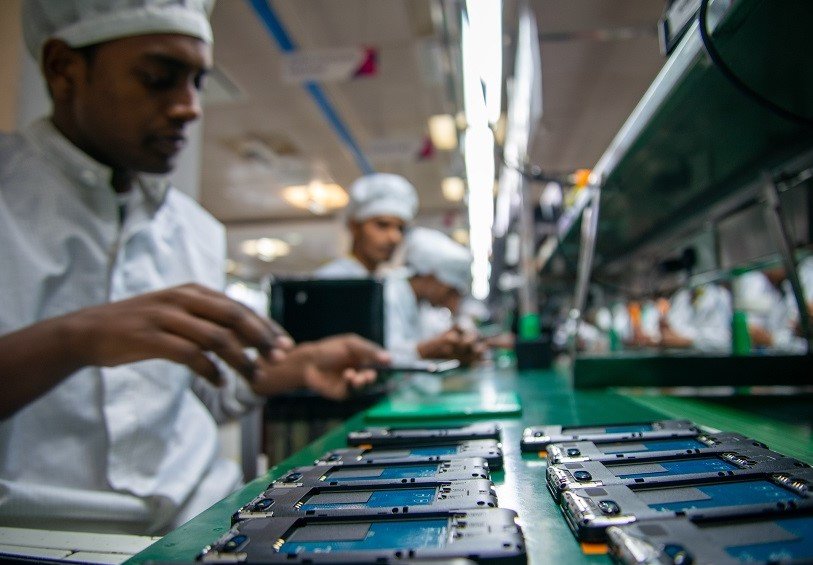India now ships more smartphones to the United States than China—a seismic shift in the global tech supply chain that seemed unthinkable just a year ago.
New data from Canalys shows India accounted for 44% of all U.S. smartphone imports in Q2 2025, more than tripling its share from the same period last year. China, once the undisputed manufacturing king, has tumbled to third place behind Vietnam.
A 240% Jump in One Year? Believe It
In numbers that have stunned even seasoned analysts, India’s smartphone exports to the U.S. spiked 240% year-on-year in the April to June quarter.
Thirteen percent last year. Forty-four percent now.
No, that’s not a typo.
This kind of leap doesn’t happen without a major push. And the main driver? Apple.
Apple is now aggressively shifting its iPhone assembly to India. And it’s not just for show. This year, it’s expected that nearly a quarter of all iPhones sold globally will be made in India.
For decades, Apple and others leaned heavily on China. But that era is clearly cracking.

China’s Dominance Cracks, Vietnam Sneaks In
China’s fall is just as dramatic. A year ago, Chinese-made smartphones made up 61% of U.S. imports. Now, they account for only 25%.
It’s a nosedive—one that would’ve been unthinkable five years ago.
Vietnam, meanwhile, quietly slipped ahead. It now holds 30% of the U.S. import share, up from a much smaller base.
One-sentence punchline: China’s manufacturing grip on U.S.-bound smartphones is officially broken.
Agilian Technology’s CEO Renauld Anjoran didn’t mince words: “The plan for India is moving ahead as fast as we can.”
That urgency is showing.
Why It’s Happening Now
This isn’t just about cost or convenience. It’s about survival in a trade environment where nothing feels predictable anymore.
What’s fueling the pivot?
-
U.S.-China trade tensions: Tariff hikes and export controls are pressuring tech brands to reduce China dependency.
-
India’s production-linked incentives (PLIs): The Indian government is throwing money, land, and policy support at electronics manufacturers.
-
Apple’s long-term hedging: With China riskier than ever, Apple is betting big on South Asia.
-
Labor and logistics: India’s workforce is large, cheap, and increasingly trained for electronics assembly.
Basically, everything lined up.
Where the Phones Are Coming From
Let’s break it down by country share for U.S. smartphone imports in Q2 2025:
| Country | Q2 2025 Share | Q2 2024 Share |
|---|---|---|
| India | 44% | 13% |
| Vietnam | 30% | 24% |
| China | 25% | 61% |
| Others | 1% | 2% |
Dixon Technologies, a key Apple partner in India, is now capable of producing up to 50 million smartphones annually. And it’s only scaling up.
So while China still has the technical know-how and factory depth, India is catching up fast—and winning in areas that matter most right now: geopolitics and proximity to U.S. markets.
Apple’s Fast-Tracked India Game Plan
This isn’t a slow burn. Apple’s acceleration is real, and it’s happening now.
By 2026, some insiders believe up to 50% of U.S.-sold iPhones could be Indian-made. That would’ve been laughable two years ago.
Apple has reportedly told suppliers to scale India operations aggressively. Pegatron, Foxconn, and Wistron are all ramping up capacity in Tamil Nadu and Karnataka.
In fact, Apple retail stores in Mumbai and Delhi are just the tip of the iceberg. What’s happening behind factory gates is far more important.
And here’s the kicker: India isn’t just doing the final assembly anymore. It’s slowly building up the full stack—components, chips, packaging. That’s where the real power lies.
What It Means for Global Supply Chains
For decades, “Made in China” was the global default for electronics. That assumption is cracking.
Supply chains now have to be “China-plus-one,” if not “China-minus-one.”
This changes everything:
-
Procurement teams must now factor in Indian timelines, ports, and regulations.
-
Logistics companies are rerouting bulk freight from Guangdong to Chennai.
-
Even American telcos are watching this closely to plan stock flows and warranties.
The U.S. is already reflecting the shift in customs data. Port traffic into Los Angeles from Indian terminals like Ennore and Mundra is quietly climbing.
India isn’t just taking over. It’s setting up shop for the long haul.
Can India Keep Up the Pace?
Here’s where things get trickier.
India has momentum, no doubt. But scaling electronics manufacturing at this level is a logistical tightrope. The electricity grid, freight corridors, and component ecosystem all need to grow in lockstep.
Factories can’t run without chips. Warehouses need reliable cold chains. Engineers need housing near the plants. It’s all interconnected.
One industry veteran said, “Right now, India is where China was in 2008. The talent’s there, the ambition’s there. The question is: can they avoid China’s mistakes?”








